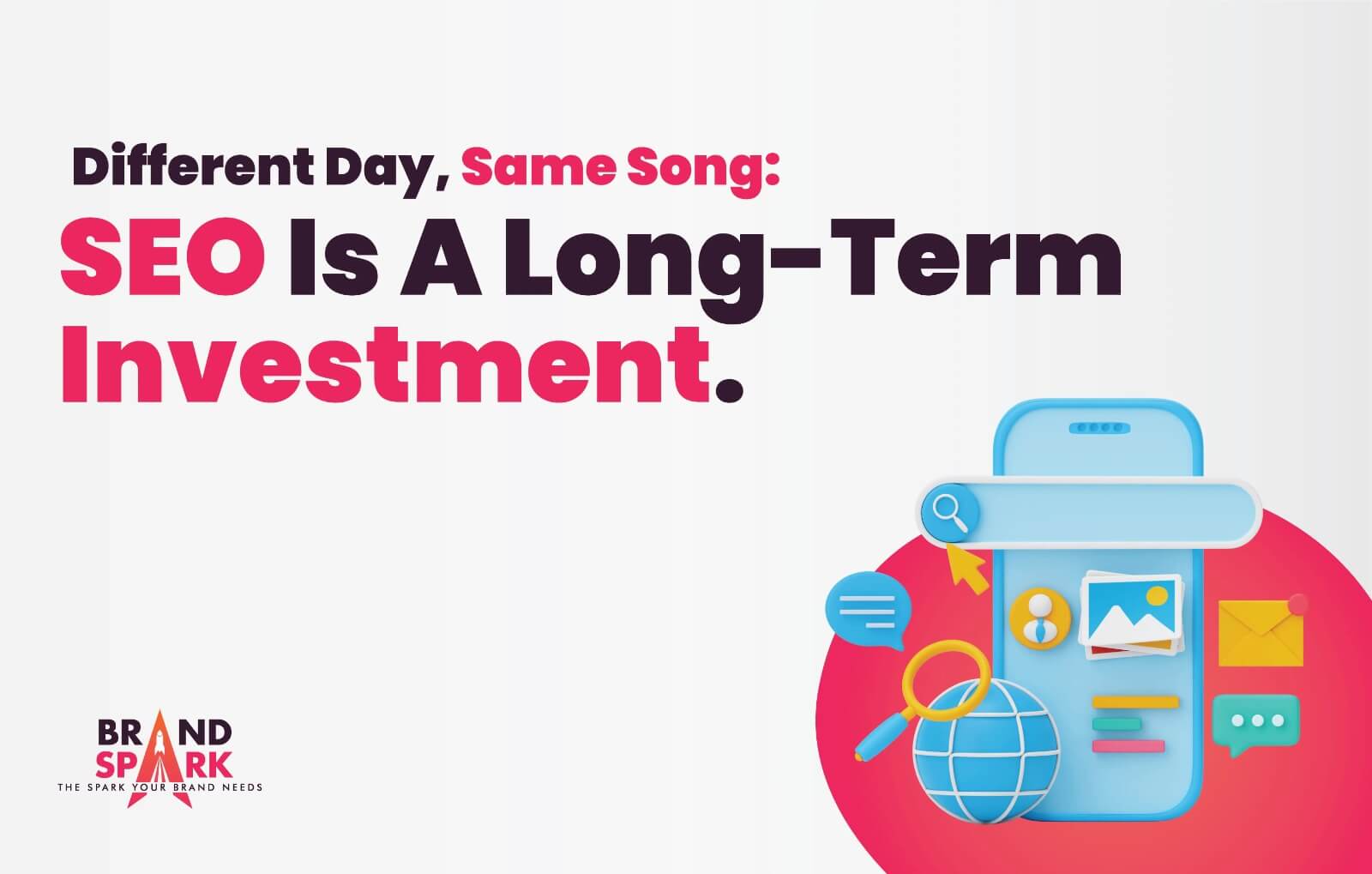In the dynamic world of digital marketing services, the refrain remains constant “Different Day, Same Song.” This sentiment particularly holds true when it comes to Search Engine Optimization (SEO). SEO is not a quick fix; it’s a melody that requires time and patience to compose. In this blog, we will delve into the intricacies of SEO, exploring what SEO optimization entails and highlighting the undeniable benefits of viewing SEO as a long-term investment.
What is SEO Optimization?
In a digital landscape dominated by search engines, understanding the essence of SEO optimization is crucial. SEO, or Search Engine Optimization, is the process of optimizing your online content so that search engines rank it higher in the search results. The primary goal is to enhance visibility and attract organic (non-paid) traffic to your website.
SEO optimization involves a myriad of strategies, from keyword research and on-page optimization to building high-quality backlinks and creating valuable content. It’s a multifaceted approach that requires a deep understanding of search engine algorithms and user behavior. At its core, SEO optimization is about aligning your online presence with the factors that search engines consider when ranking websites.
For those unfamiliar with the technical jargon, SEO can seem like a complex symphony. However, the basic principle is simple – it’s about making your website more accessible, relevant, and appealing to both search engines and users.
Benefits of SEO
1. Increased Visibility and Traffic:
One of the primary benefits of SEO is increased visibility. When your website ranks higher in search engine results, it is more likely to be seen by users. This heightened visibility translates into more organic traffic. SEO is not just about attracting any traffic but attracting the right kind of traffic – users actively searching for information, products, or services related to your business.
2. Credibility and Trust:
Websites that appear at the top of search results are often perceived as more credible and trustworthy by users. SEO not only improves your visibility but also establishes your website as an authoritative source in your industry. Building credibility takes time, and SEO is the vehicle that can steadily drive your website towards that destination.
3. Better User Experience:
SEO is not just about pleasing search engines; it’s about enhancing the user experience. A well-optimized website is more user-friendly, with faster load times, mobile responsiveness, and easy navigation. By focusing on improving user experience, you not only satisfy your audience but also align with search engine preferences, contributing to higher rankings.
4. Long-Term Sustainability:
Perhaps the most crucial benefit of SEO is its long-term sustainability. Unlike paid advertising, where visibility ceases the moment you stop spending, the impact of SEO endures. Once your website secures a solid position in search results, maintaining that position becomes relatively easier. SEO is an investment that continues to yield results over time, providing a steady stream of organic traffic.
5. Cost-Effectiveness:
While the initial stages of SEO may require an investment of time and resources, its long-term cost-effectiveness is undeniable. Unlike paid advertising models, where you pay for each click, organic traffic driven by SEO is essentially free. Over time, the return on investment (ROI) for SEO often surpasses that of paid advertising, making it a sustainable and cost-effective strategy.
6. Adaptability to Industry Changes:
The digital landscape is ever-evolving, with search engines constantly refining their algorithms. SEO, as a long-term investment, enables your website to adapt to these changes. By staying informed and adjusting your optimization strategies, you can maintain or improve your rankings, ensuring that your business remains competitive in the digital marketplace.
7. Analytics and Insights:
SEO provides valuable data and insights into user behavior. Through tools like Google Analytics, you can track the performance of your website, understand user demographics, and analyze the effectiveness of your content. This data-driven approach allows you to make informed decisions, refine your strategies, and continually improve your online presence.
In a world where instant gratification often takes precedence, it’s essential to recognize that SEO is a marathon, not a sprint. It’s about building a foundation, nurturing it, and reaping the rewards over time. Businesses that approach SEO as a long-term investment position themselves for sustained success in the competitive digital landscape.
The Bottom Line
In the symphony of digital marketing, SEO is the melody that requires patience, precision, and persistence. It’s about understanding that the benefits of SEO unfold gradually, like a masterpiece that reveals its intricacies with each passing note. What is SEO optimization? It’s the art of orchestrating your online presence to resonate with both search engines and users. The benefits of SEO are not just immediate; they are enduring, contributing to the long-term growth and success of your business in the digital realm. Embrace the journey, for in the world of SEO, the refrain might be “Different Day, Same Song,” but the harmony it creates is uniquely yours.














